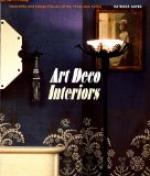The sofa large, strong and luxuriously comfortable; the curtains simple, durable and masculine in gender. The tapestry and architectural picture, decorative and appropriately impersonal, as the wall decorations should be in a room used merely for transacting business.
[Illustration: A Corner of the Same Office]
Some prefer antiques a bit dilapidated; a missing detail serving as a hallmark to calm doubts; others insist upon completeness to the eye and solidity for use; while the connoisseur, with unlimited means, recognises nothing less than signed sofas and chairs, and other objets d’art. To repeat:—be always on the lookout, remembering that it is the man who knows the points of a good dog, horse or car who can pick a winner.
Wonderful reproductions are made in New York City and other cities, and thousands bought every day. They are beautiful and desirable pieces of furniture, ornaments or silks; but the lover of the vrai antique learns to detect, almost at a glance, the lack of that quality which a fine old piece has. It is not alone that the materials must be old. There is a certain quality gained from the long association of its parts. One knows when a piece has “found itself,” as Kipling would put it. Time gives an inimitable finish to any surface.
If you are young in years, immature in taste, and limited as to bank account, you will doubtless go in for a frankly modern room, with cheerful painted furniture, gay or soft-toned chintzes, and inexpensive smart floor coverings. To begin this way and gradually to collect what you want, piece by piece, is to get the most amusement possible out of furnishing. When you have the essential pieces for any one room, you can undertake an ensemble. Some of the rarest collections have been got together in this way, and, if one’s fortune expands instead of contracting, old pieces may be always replaced by those still more desirable, more rare, more in keeping with your original scheme.
To buy expensive furnishings in haste and without knowledge, and within a year or two discover everything to be in bad taste, is a tragedy to a person with an instinctive aversion to waste. Antique or modern, every beautiful thing bought is a cherished heirloom in embryo. Remember, we may inherit a good antique or objet d’art, buy one, or bequeath one. Let us never be guilty of the reverse,—a bar-sinister piece of furniture! Sympathy with unborn posterity should make us careful.
It is always excusable to retain an ugly, inartistic thing—if it is useful; but an ornament must be beautiful in line or in colour, or it belies its name. Practise that genuine, obvious loyalty which hides away on a safe, but invisible shelf, the bad taste of our ancestors and friends.




